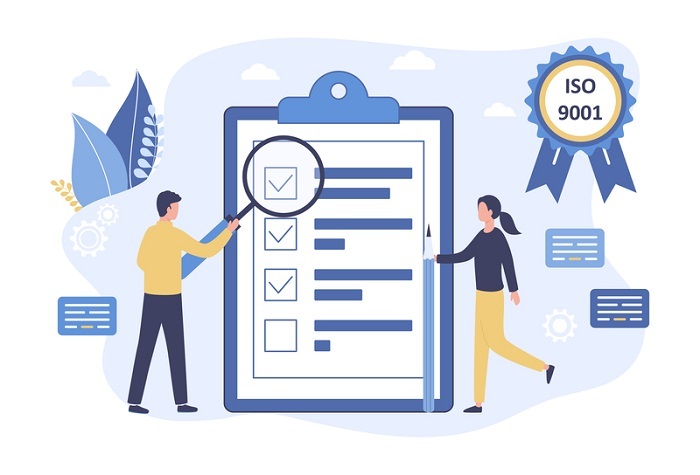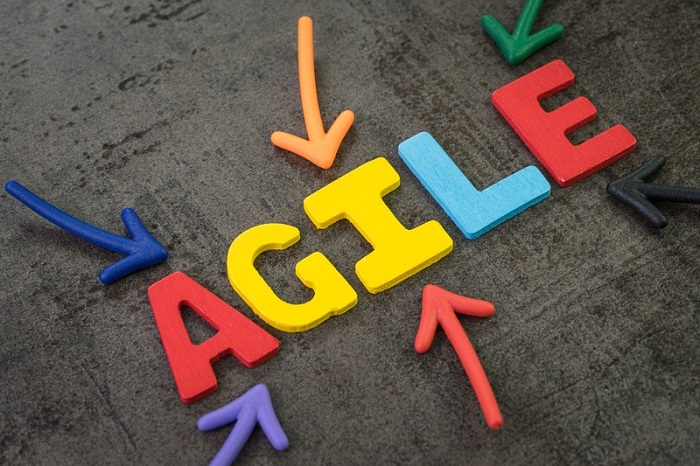
 Data Structure
Data Structure Networking
Networking RDBMS
RDBMS Operating System
Operating System Java
Java MS Excel
MS Excel iOS
iOS HTML
HTML CSS
CSS Android
Android Python
Python C Programming
C Programming C++
C++ C#
C# MongoDB
MongoDB MySQL
MySQL Javascript
Javascript PHP
PHP
- Selected Reading
- UPSC IAS Exams Notes
- Developer's Best Practices
- Questions and Answers
- Effective Resume Writing
- HR Interview Questions
- Computer Glossary
- Who is Who
What Are the Different Quality Management Frameworks?
This article offers a survey of the many QMFs that companies can use to oversee the quality of their goods and services. QMFs make sure that companies can deliver what customers want.

Some of the most popular models include ISO 9001, Six Sigma, Lean, Total Quality Management (TQM), Kaizen, and Agile Quality Management. This article compares and contrasts four popular frameworks, outlining their salient characteristics, implementation advantages, and typical application fields. This article also compares these frameworks so that businesses can pick the one that works best for them.
Introduction to Quality Management Frameworks
QMFs, or quality management frameworks, are used by companies to oversee the high standards of their goods and services. Businesses can use these frameworks to better understand and fulfil their customers' wants and needs.
ISO 9001, Six Sigma, Lean, and Total Quality Management (TQM) are just some of the Quality Management Frameworks available to businesses. Principles, methods, and tools for quality management vary across frameworks.
For instance, ISO 9001 is a set of guidelines for what should be included in a quality management system. Companies across many different sectors rely on it to guarantee that their wares always satisfy client requirements.
There were over 1,100,000 ISO 9001 certified organisations in 2020, as reported by ISO's own survey, demonstrating the widespread adoption of this Quality Management Framework.
ISO 9001 Quality Management System

The ISO 9001 Quality Management System is a set of guidelines that businesses can follow to guarantee that their wares consistently deliver on promises of quality and reliability to their clientele. It specifies the steps to take in creating a quality management system and how to keep it running smoothly.
One of the most popular quality management frameworks, ISO 9001 has been adopted by over 1.3 million organisations across 160 countries as of 2021. The framework's emphasis on analysing and bettering processes in the name of quality and customer satisfaction is indicative of its process-oriented foundation.
Organizations can boost their productivity, client satisfaction, and bottom line by adopting the ISO 9001 framework. It provides a shared language and structure for businesses to demonstrate their dedication to quality management by sharing their quality goals and progress with their stakeholders.
Total Quality Management (TQM)
Total Quality Management (TQM) is a framework used by organisations to manage and improve their quality processes. TQM is based on the idea that every employee is responsible for maintaining quality in their work, and that continuous improvement is essential to success.
TQM is a collection of management practises aimed at improving quality and reducing waste in all aspects of an organisation. It emphasises customer satisfaction and involves understanding and meeting the needs of customers.
TQM also involves a focus on the entire process, from design to delivery, and requires input from all levels of an organization. This includes the involvement of suppliers and partners, as well as a commitment to ongoing training and education for employees.
Six Sigma
Six Sigma is a popular Quality Management framework that aims to reduce defects and variability in a process. It employs data and statistical analysis to identify and eliminate error sources, thereby improving quality and efficiency. The term "Six Sigma" refers to a statistical quality measure that indicates a process has fewer than 3.4 defects per million opportunities.
Six Sigma is commonly used in the manufacturing and production industries, but it can also be applied in other fields such as healthcare, finance, and information technology. The framework consists of a number of steps and tools, such as the DMAIC (Define, Measure, Analyze, Improve, Control) methodology and various statistical techniques such as regression analysis and control charts.
By following the Six Sigma approach, organisations can reduce waste, improve customer satisfaction, and increase profitability. The framework is known for its focus on data-driven decision-making and continuous improvement, which can lead to significant gains in efficiency and quality over time.
Lean Management
Lean Management is a quality management framework that focuses on minimising waste and maximising value in a company's processes. This approach originated in the manufacturing industry but has since been applied to other industries as well.
At its core, Lean Management emphasises continuous improvement and the elimination of non-value-added activities in order to improve efficiency and quality. This entails identifying and eliminating any activities that add no value to the finished product or service, such as excess inventory, unnecessary steps in a process, or defects.
To accomplish this, Lean Management fosters a culture of collaboration and problem-solving among all employees, beginning at the top. This includes using tools such as visual management, process mapping, and continuous improvement techniques like Kaizen.
Kaizen
Kaizen is a Japanese term that means "continuous improvement." It is a philosophy that is used to improve quality and productivity in a business or organization. Everyone in the organization, from top-level management to factory workers, is involved in the Kaizen concept.
The goal of Kaizen is to identify and eliminate waste in the organization's processes. Waste can include things like overproduction, waiting time, unnecessary motion, defects, and excess inventory. By eliminating waste, the organisation can improve quality, reduce costs, and increase efficiency.
Kaizen involves a series of small, incremental improvements that are made over time. These improvements can be made in any area of the organization, from production to administration. The improvements are often suggested by the employees themselves, who are encouraged to think about ways to improve their work processes.
Agile Quality Management

Integrating customer and stakeholder feedback throughout the development process, Agile Quality Management seeks to continuously improve the quality of the product or service. It stresses teamwork, adaptability, and quickness to new situations.
Automated testing, continuous integration, continuous delivery, and continuous deployment are just some of the practises and tools that Agile Quality Management uses to get the job done. These steps ensure that the product is tested and verified thoroughly at each stage, cutting down on the likelihood of errors and flaws.
Comparison of Quality Management Frameworks
In order to guarantee that their goods and services fulfil predetermined quality standards, businesses can implement quality management frameworks. Several distinct models exist, each with its own method of quality management.
ISO 9001, developed by the International Organization for Standardization (ISO), is a widely used framework for quality management systems. Total Quality Management (TQM) is another framework that emphasises employee participation in a culture of constant improvement.
The Six Sigma methodology is another well-liked strategy; it employs statistical analysis to root out and eventually eradicate production flaws. Lean Manufacturing is another methodology with the same overarching goal of maximising customer value while minimising production waste.

